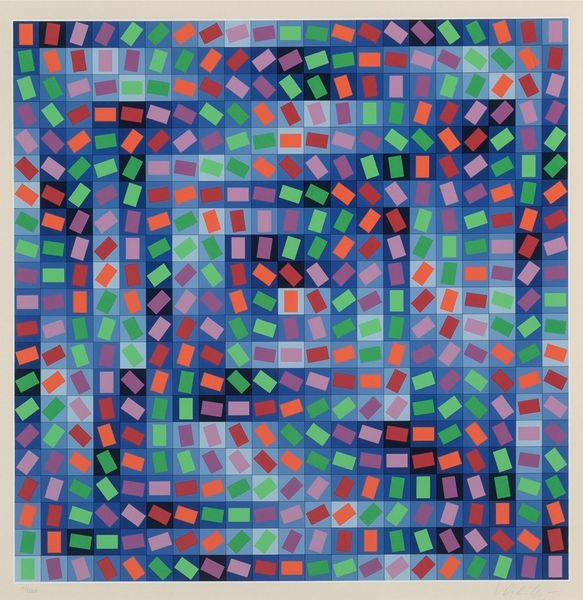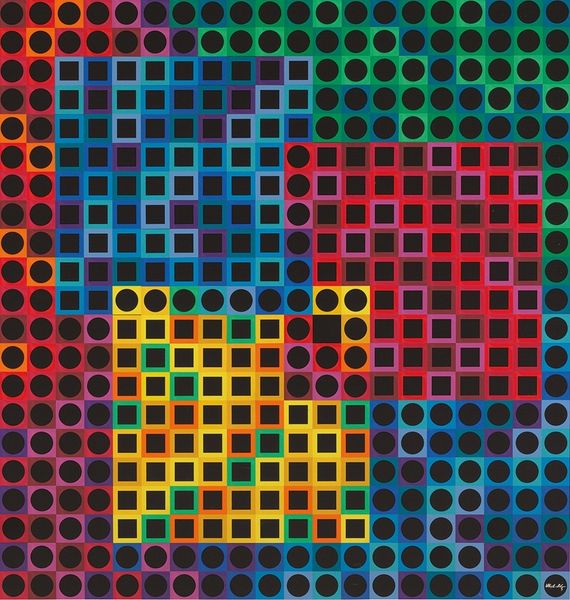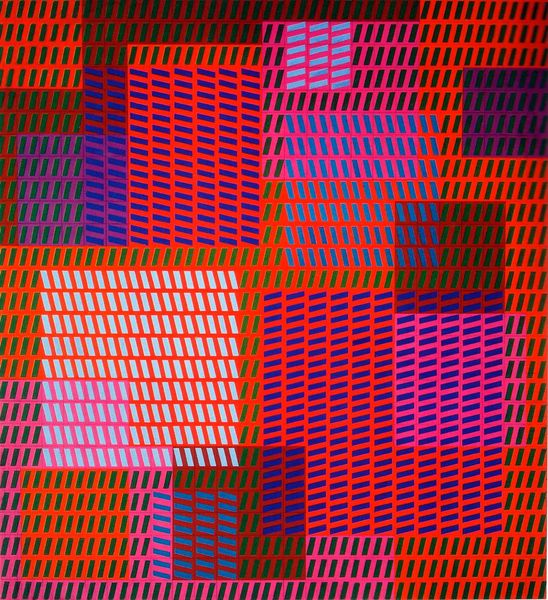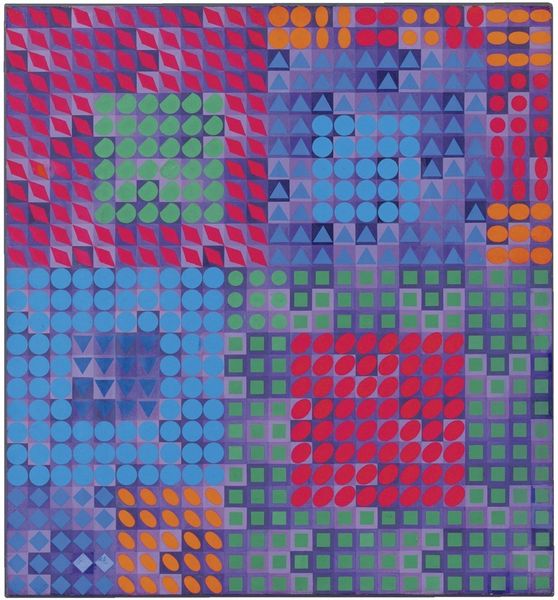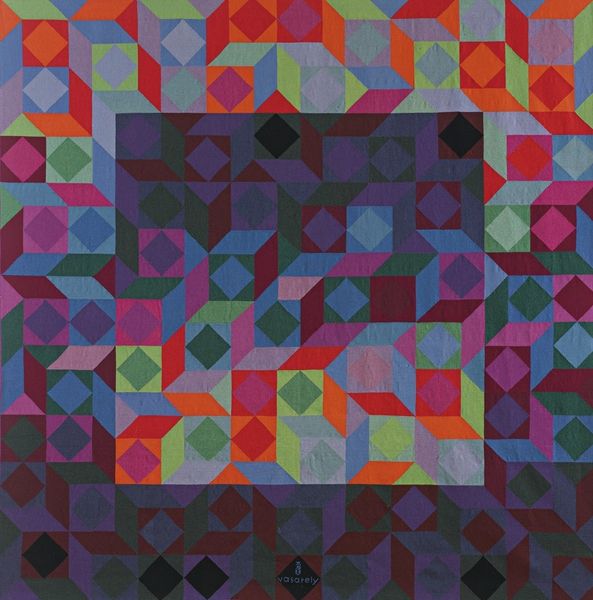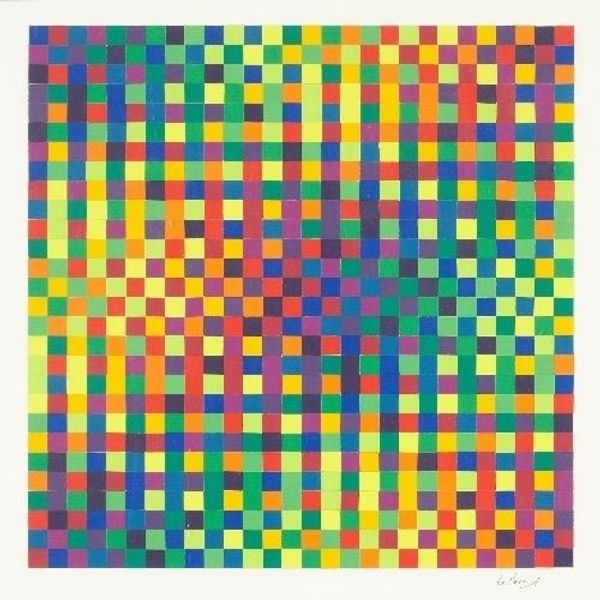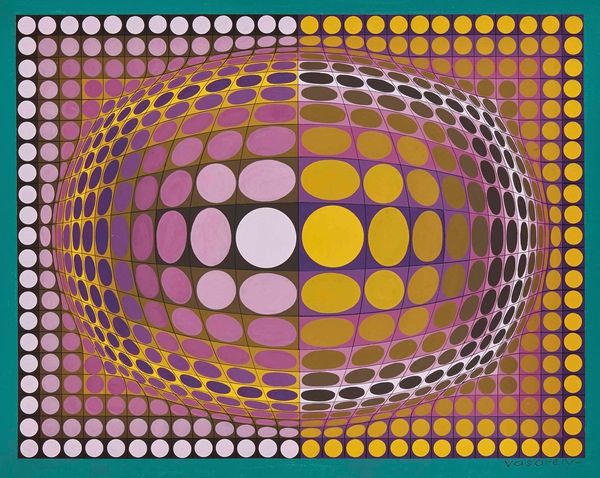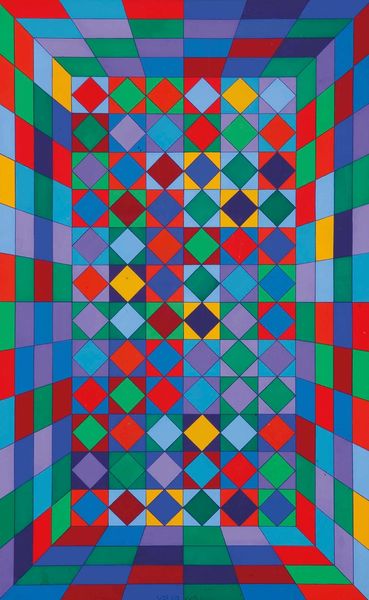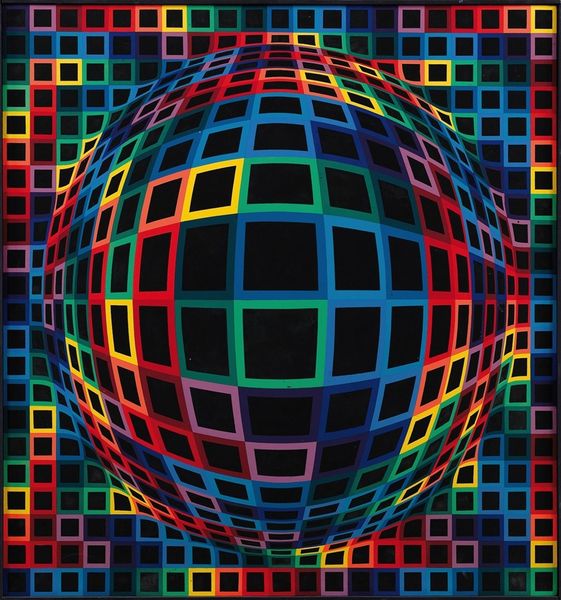
acrylic-paint
#
op-art
#
acrylic-paint
#
form
#
geometric pattern
#
organic pattern
#
geometric
#
geometric-abstraction
#
abstraction
#
pop-art
#
line
Dimensions: 200 x 200 cm
Copyright: Victor Vasarely,Fair Use
Curator: Let's turn our attention to "Orion Gris" crafted in 1969 by Victor Vasarely. Vasarely, a central figure in Op Art, constructed this piece with acrylic paint, a relatively new medium at the time, which offered vibrant colors and a smooth, consistent surface. What do you see, first and foremost? Editor: Wow, what a trip. At first glance, it’s like gazing into some sort of pulsating vortex. The concentric squares, these shifts from squares to circles – there is an optical jolt for the eye here, the colors seeming to vibrate slightly. Curator: Indeed. Vasarely’s works operate at this fascinating intersection between high art and mass production. He envisioned art that could be democratized, replicated, and integrated into everyday environments – think wallpaper, textiles, and architectural elements. It’s interesting to note his exploration of the grid, too, a foundational element of modernist design but also a structure he disrupts through optical illusion. Editor: It’s kind of mind-bending! The circles are these shadowy planets or cells, floating on fields of pure color. Makes you wonder about the artist’s mindset during the late sixties. A push towards geometry or meditation? Escape, maybe, through abstraction. Curator: Well, one could see his serial approach, the repetition of geometric forms and carefully calibrated color relationships as reflecting a shift toward industrialized society and serial production that Warhol also addresses. Editor: Yet, the fact that it’s hand-painted, that somebody actually made this. This tension, that human touch, elevates it from just a cool design. All those painted cells create something mesmerizing. It also feels hopeful, almost futuristic. What were his studio practices? Curator: While precise details regarding his assistants remain somewhat vague, his widespread production relies on their labor. Understanding this interplay of individual authorship and collective production sheds light on Op Art's impact in visual culture and the commercialized art world. Editor: Ultimately, it reminds us of how powerful geometry, math and illusion can be. Who needs realistic portrayal of something when the surface vibrates to create such illusion and question perception? Curator: That is quite right. Hopefully we offered our visitors new and multifaceted considerations as they think about how art exists beyond purely the art space. Editor: Absolutely, and maybe consider staring into this universe a little longer! It will definitely pay you back with another optical treat.
Comments
No comments
Be the first to comment and join the conversation on the ultimate creative platform.
